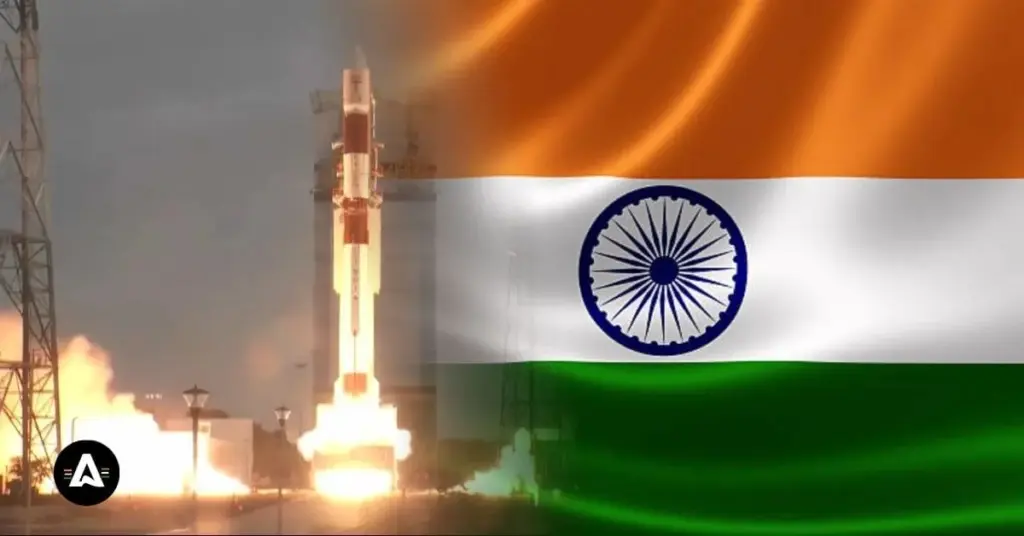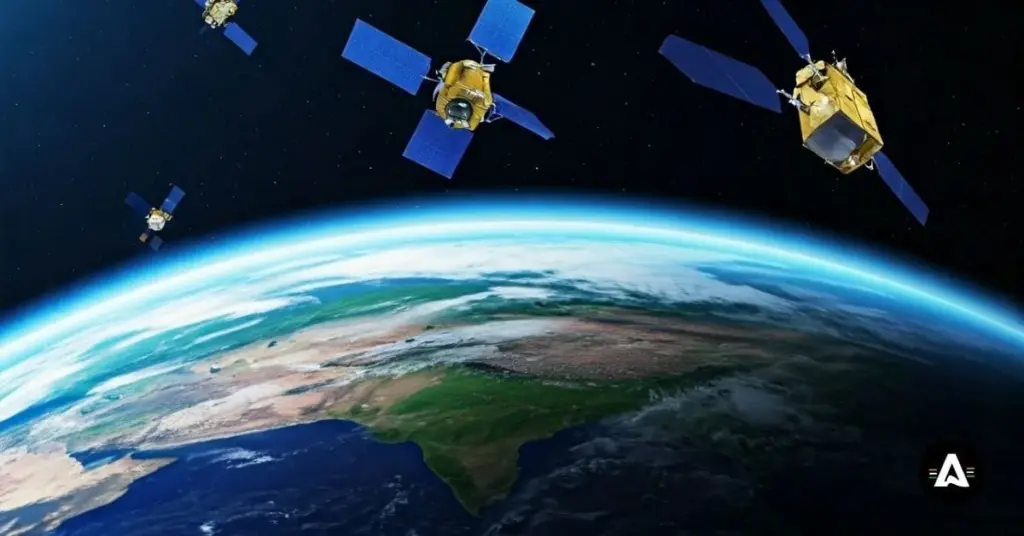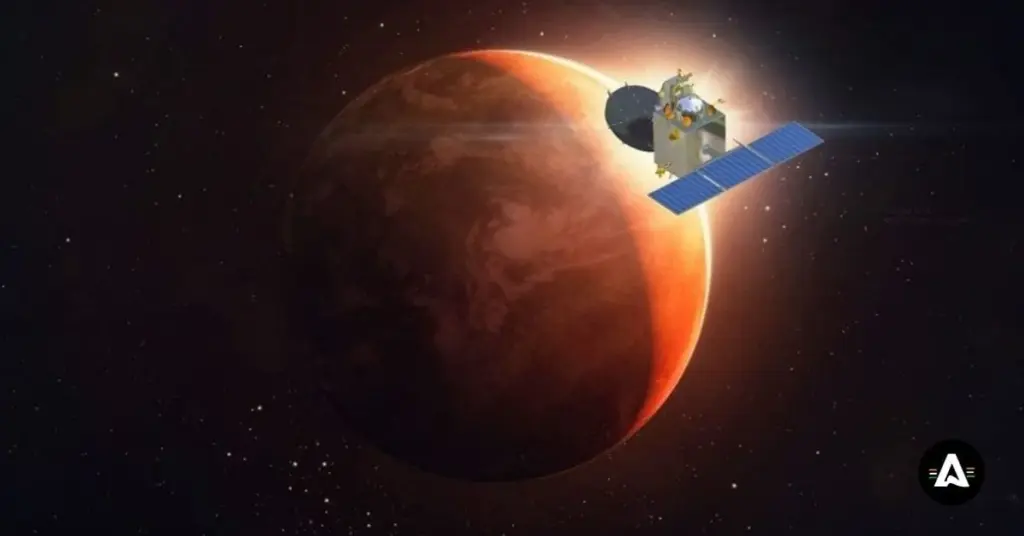The Story of PSLV - India’s Workhorse Rocket
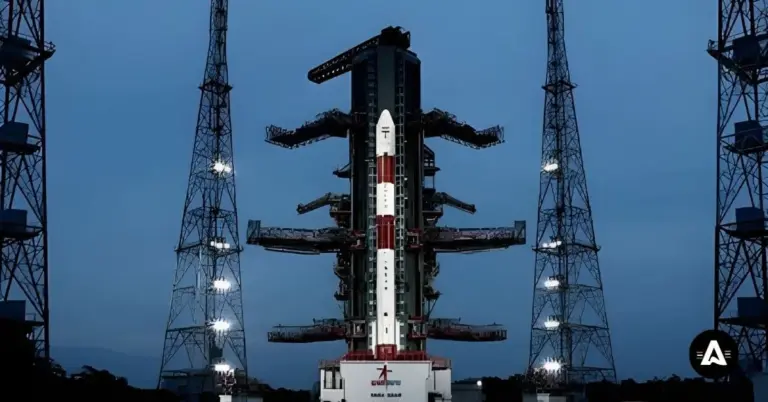
The Polar Satellite Launch Vehicle (PSLV) is known as the workhorse of ISRO. It is a medium-lift satellite launch vehicle, and it plays a key role in India’s space work.
It has put many famous payloads into space, like Chandrayaan-1, the Mars Orbiter Mission, and Astrosat, by getting them to different orbits.
PSLV has helped most with jobs in low Earth orbit and Sun-synchronous Orbit. Many people all over the world now trust this launch vehicle for their satellite launch needs.
With more than 60 launches and a success rate of 94%, PSLV shows that it is very reliable.
It also works in commercial missions through NewSpace India Limited, sending satellites up for other countries too.
PSLV uses a smart four-stage system. The third stage combines solid and liquid fuel to help give great control and make sure the satellite gets into the right orbit.
Introduction
The Polar Satellite Launch Vehicle, called PSLV, is one of India’s top and most trusted satellite launch vehicles. The Indian Space Research Organization, known as ISRO, made this launch vehicle for India. It first started working in 1993. With the PSLV, India can put its satellites in Sun-synchronous orbits without help from others. This satellite launch vehicle is not just for India. It also helps many other countries put satellites of all sizes and payload into space. Today, the polar satellite launch vehicle shows the world India’s strength in technology. It is a big reason for national pride.
To know how it all began, we need to go back to the start. We have to look at the early work that made PSLV happen. This first work is what helped it become what it is now.
Origins and Early Development of PSLV
PSLV’s story goes back to 1978. At that time, ISRO started working on making a satellite launch vehicle. The main goal was to build a launch vehicle that could carry things into Sun-synchronous Orbit. Later on, the plan got bigger. India made some new moves with its Bhaskara-1 spacecraft, and this gave fresh energy to the team. By 1982, there was enough money for a new and strong launch vehicle. This launch vehicle would use both solid and liquid fuel.
The first launch of PSLV took place in September 1993. This first try did not work. There was a problem with how one part of the launch vehicle separated. But the team did not give up. They worked hard after this. Later launches had success. PSLV then became known as India’s main satellite launch vehicle.
Even when there were hard days in the beginning, the PSLV program gave India a starting place to build its dreams for space. This gave the country a push to do more in the field. Now, let’s look at the vision that keeps this launch vehicle and India reaching for more.
Vision Behind the PSLV Program
The Polar Satellite Launch Vehicle (PSLV) project started so that India could send up its own satellites without help from other countries. The main goal was to build a satellite launch vehicle in India. This launch vehicle had to put Indian Remote Sensing Satellites (IRS) into the right orbits in space. It helped India move forward in making and using its own polar satellite launch vehicle. This was a big step for India’s work with launch vehicles and satellite launch missions.
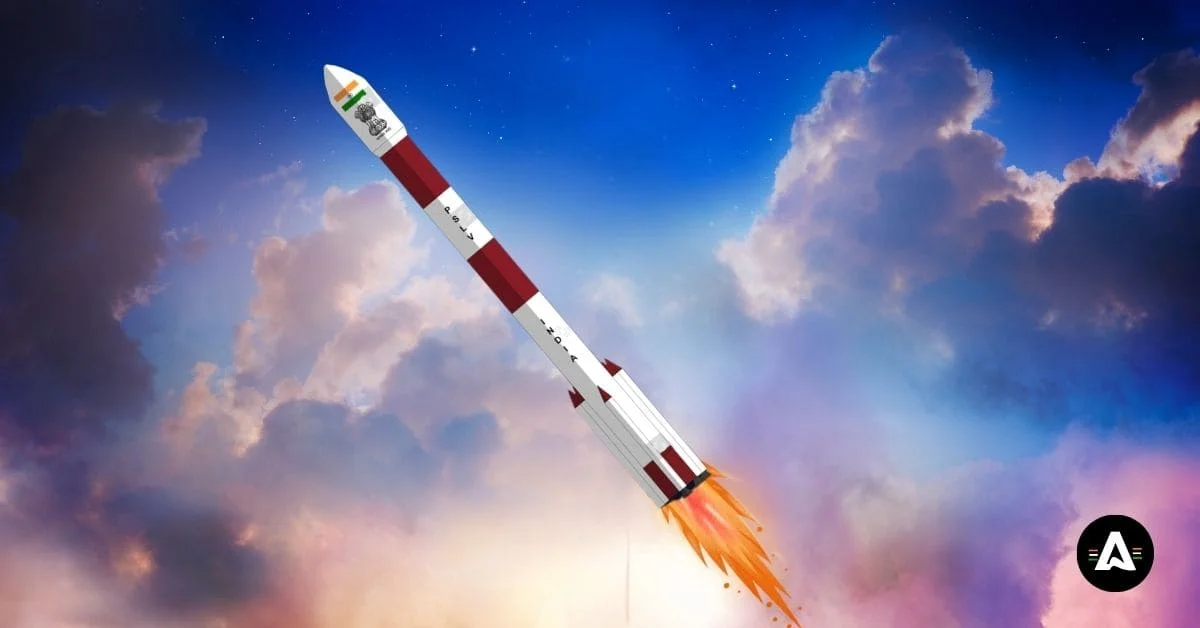
A special thing about the PSLV launch vehicle is that it uses both solid and liquid fuel systems. This mix helps to keep the launch cost low. The launch vehicle can carry different kinds of payloads. It can send satellites into low earth orbit or Sun-Synchronous Orbits. This allows the PSLV to meet the needs of both science research and business missions.
Over the years, the PSLV has shown how India can be confident in what it does by carrying out many tough missions again and again. Because of how reliable and steady the rocket is, people now call it the “workhorse of ISRO.” Today, the PSLV helps a lot with sending up satellites for use in India. It also helps the country take part in the launch of satellites from other parts of the world, making India an important name in this field.
Key Milestones in Development
PSLV has hit many big points through the years. These are spots where new and better tech came in. At first, the team had some problems and things did not work out. But the team did not stop. They kept going with strong will. As time went on, these tries and wins helped india be known all over the world for what it can do in space.
Milestone | Details |
|---|---|
September 1993 | PSLV-D1 had its first launch. There was a failure because of a problem with the stage coming apart. |
October 1994 | PSLV-D2 worked well and put the IRS-P2 satellite into space. This showed the rocket could do the job. |
February 2017 | PSLV-C37 set a new record. It sent 104 satellites up in one go. |
June 2018 – Present | The Union Cabinet gave money to support 30 PSLV missions. This helped with more launches to take place until 2024. |
With all its wins and tough times, PSLV is at the center of what is next for India in space. The rocket has had jobs that started slow, but it learned and then broke more records. Now, let us look closer at what makes this spacecraft special for India.
Technical Structure and Design
PSLV is a type of satellite launch vehicle. This launch vehicle uses both solid and liquid fuels in its build. There are four main parts, called stages, that work one after another. These parts use different fuels. This mix helps the launch vehicle get the satellite to its right spot in space.
The third stage of the launch vehicle uses solid HTPB fuel. It gives stable power. This helps the next stages run well. PSLV is good at carrying many kinds of loads and works well for low Earth orbit missions. The third stage is important for the launch vehicle, especially when reaching low Earth orbit.
Now, let’s take a closer look at how the four stages of this satellite launch vehicle work. We will see what is done at each part of the launch vehicle and the engineering behind it.
Four Stages of Polar Satellite Launch Vehicle (PSLV) Explained
The PSLV uses four main stages that help it be accurate and launch well each time. It works with both solid fuel and liquid fuel systems.
- First Stage: This part uses a solid fuel called hydroxyl-terminated polybutadiene (HTPB). It acts as a huge booster and gives the most power. This helps the rocket lift off from the ground.
- Second Stage: The second stage has the Vikas engine. It works with liquid fuel. It uses nitrogen tetroxide and UDMH to keep the rocket going forward.
- Third Stage: In the third stage, a solid fuel that has Kevlar-polyamide is used. It gives steady power to get the rocket ready to go into space.
- Fourth Stage: The fourth stage has two small liquid engines. They use monomethylhydrazine (MMH) and mixed oxides of nitrogen (MON) as their fuel.
All four stages help to put the satellite in the right spot. This is why people all over the world trust PSLV to send satellites into space.
Innovations in Propulsion and Guidance
PSLV, also known as the Polar Satellite Launch Vehicle, is a popular satellite launch vehicle. It uses both solid and liquid boosters at the same time. This launch vehicle design helps to lower the cost of each launch. It also makes sure that different types of payloads are put in space with great accuracy. The guidance systems of the polar satellite launch vehicle help give more control during launch.
One important part of the PSLV is the use of the Secondary Injection Thrust Vector Control (SITVC) system in the first stage. This system helps steer the rocket and change its path while it is flying. It also makes the rocket move better in the air. In the fourth stage, there are two engines. This lets the rocket change orbits easily to put the satellite exactly where it needs to be.
PSLV’s guidance systems have now been improved to add new features. These changes include a reaction control system that uses helium. This helps keep the rocket steady. The engines can also restart more than once, so it is easier to put satellites into different orbits quickly.
These new technologies help the PSLV work better and make it a strong competitor in the worldwide satellite launch market. With every launch, these modern features help the rocket get good results. It also helps the PSLV set new records in how satellites are sent into space.
Notable PSLV Variants
PSLV comes in different types, and each one is used for a different need. The Polar Satellite Launch Vehicle-XL (PSLV-XL) has bigger strap-on boosters. These boosters help the satellite launch vehicle carry a bigger payload. The Core-Alone type (PSLV-CA) does not have any boosters. So, this launch vehicle is best to use when you have a lighter or smaller payload that needs to go up.
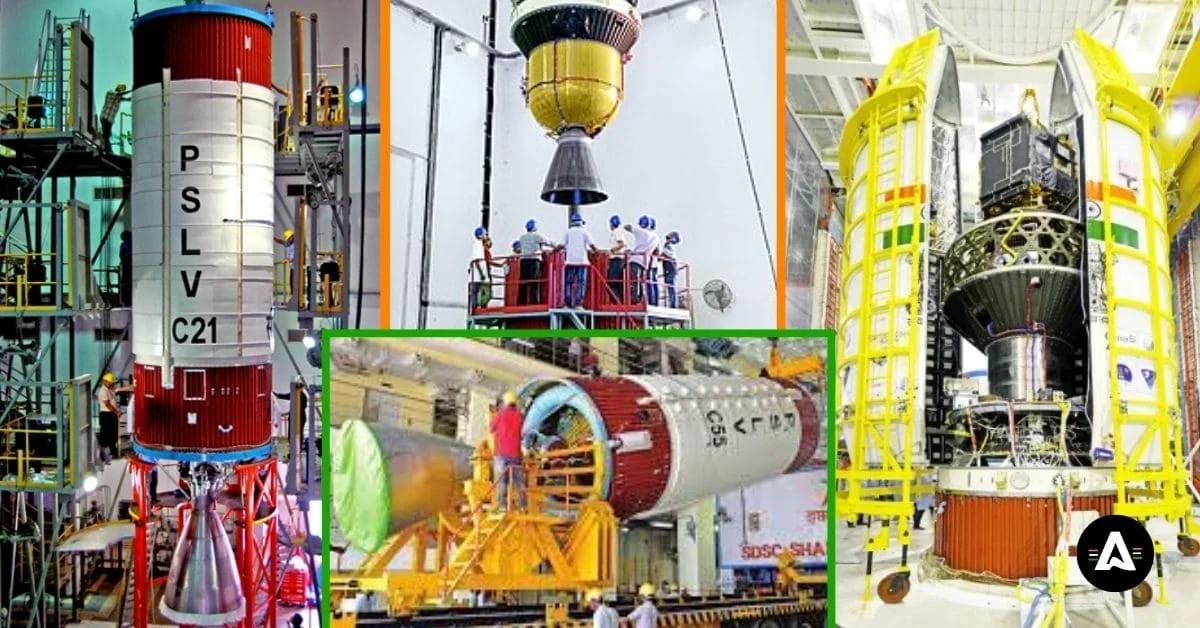
India always works to improve the polar satellite launch vehicle. The country keeps making changes to the launch vehicle. This helps India keep up with new satellite technology. ISRO shows it wants to save money and give better payload options each year with these updates. The satellite launch vehicle is a key part of India’s work in this area.
Standard, Core-Alone, and Extended Versions
PSLV has a few types to meet different needs:
- Standard Version (PSLV-G): This version can take a payload of 1,678 kg to a Sun-synchronous orbit.
- Core-Alone (PSLV-CA): This is a good choice for smaller satellites. It has a simple design with fewer parts.
- Extended Version (PSLV-XL): This one comes with stronger boosters. It can take a payload of 1,800 kg without any trouble.
- PSLV-DL and QL: These are the new models. One has two strap-ons and the other has four. They help to get to the right orbit faster.
These different PSLV options make it possible for ISRO to handle many types of satellite launches. With all the choices the PSLV offers, they can fit what each project needs. This helps them to give the right service for every launch and make sure satellites get to where they have to go.
Special Missions and Customized Payload Launches
PSLV is a rocket in India that people know for special space missions. It be able to send satellites into more than one orbit at the same time. PSLV can also carry extra items with it on a single trip. NewSpace India Limited helps PSLV do its work. Because of NewSpace India Limited, PSLV is now used as a commercial rocket. It helps many countries around the world put satellites into space.
Taking part in different types of missions shows how useful and flexible PSLV can be. For example, in the PSLV-C44 launch, the payload was the KalamSAT-V2 CubeSat. In the PSLV-C45 mission, new tests were done on a fresh orbital platform called POEM. These missions make it clear that PSLV is good at leading new scientific work.
The way PSLV can adjust to new needs helps India and ISRO reach their goals. This is important for both of them. It also lets PSLV bring in a mix of projects from other countries. This helps the PSLV program grow and get better.
Historic Launches and Achievements
India’s workhorse of ISRO, the PSLV, has played a big role in the country’s space program. It has helped India go higher in the space world. The PSLV sent up big missions like Chandrayaan-1, Mars Orbiter Mission, and Astrosat. This rocket shows how far India has come, and how the workhorse of ISRO helps India reach for the stars.
In February 2017, the PSLV made news by sending 104 satellites to space in one go. This showed the strength and skill of the team behind it. Because it can always get the work done the right way, it has become a big part of how india plays a role in new space projects across the globe. The pslv has helped india be seen as a top country in the world’s space work.
Landmark ISRO Missions and Record-Breaking Launches
PSLV’s work has brought a lot of good for india.
The launches have been smooth and on time. They show that india can do well in space. Many people now know about india because of it. This has made india feel proud and look strong in the world.
- Mars Orbiter Mission (2013): India used PSLV to send its first probe to another planet. The rocket showed its skill by putting the probe in the right spot out in space.
- PSLV-C37 (2017): This mission set a world record by sending 104 satellites into space at one time.
- Aditya-L1 (2023): This was India’s mission to look at the sun. It showed that PSLV can work well for a long time in low earth orbit.
From sending craft to the moon to making big groups of satellites, the PSLV helps india do more in space. This rocket lets india try new things and reach further than before. Each time they use it, they find better ways to work in space. The pSLV shows how india can keep changing and growing in space.
International Collaborations and Commercial Success
The Polar Satellite Launch Vehicle (PSLV) is a satellite launch vehicle that many people in the world trust. This launch vehicle is used by NewSpace India Limited in India. It has done very well in sending satellites into space. In fact, it has sent 345 satellites from 36 countries. Because of this record, a lot of people and countries feel sure about using the PSLV for their own satellites.
In business, PSLV has signed contracts with Larsen & Toubro by taking part in open bidding. This shows that India can make good money from putting satellites in space. The private sector now plays a bigger role in the space industry. Even with this, PSLV still does well and stays at the top. This points to its strong net asset value.
The PSLV is known for being reliable and not too expensive. This has made it a top pick for putting satellites into space. It has done well over time and can carry many different kinds of loads. This has helped it stay ahead in the space launch business, where there is a lot of competition.
Conclusion
The PSLV is an important part of India’s space work. It shows the new ideas and good skills people in India have in making technology. Each PSLV launch sets new marks for rockets all over the world. It also gives young people hope and tells them to learn more about space. The many jobs PSLV has done show the hard work, talent, and care of those who build and send it. Their work helps India move forward in science and business to do with space. In the coming years, PSLV will keep being a big part of India’s plans as the country works more in space. It will help start new big things and will lead to working with people from other places, too. If you want to see what PSLV can do for you in anything related to space, please feel free to get in touch to learn more!
Frequently Asked Questions
PSLV is often called the workhorse of ISRO. It uses solid fuel and liquid fuel. This mix helps it to place different payloads into orbit with a lot of accuracy. The rocket has a success rate of 94%. This shows it is very reliable for Indian missions and also for those from other countries.
PSLV is built to put things in Sun-synchronous and low Earth orbits. It has four stages. The third stage uses solid fuel to work. GSLV, on the other hand, can carry heavier loads. It uses cryogenic technology and sends things to geostationary transfer orbits.
Out of 62 times that the PSLV was sent up, there were three times when it did not work at all and one time when it did not work fully. So, the success rate for it is 94%. These issues were very important. They helped make its work better over time.
PSLV cannot carry people to space. This is because the payload is limited. Also, you can use this rocket only one time. For putting people in space, India needs other kinds of launch vehicles. India will use new systems like Gaganyaan for sending a crew into space.
PSLV has a good future. NewSpace India Limited wants to get private companies to build PSLV rockets. The missions will also see some upgrades. As ISRO tries out new ideas, PSLV will keep being important. It is one big piece of India and its plans to launch more satellites.

